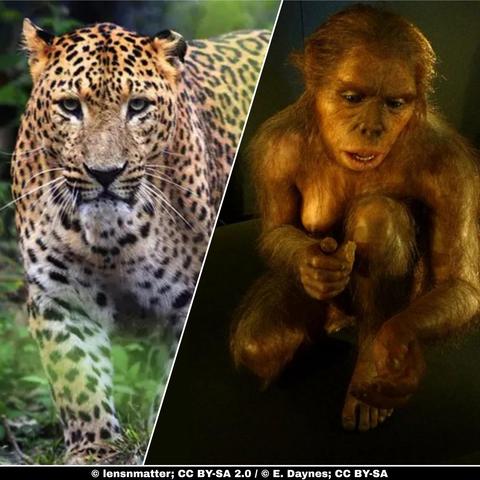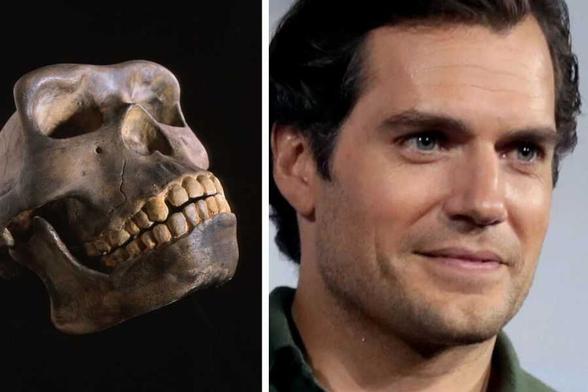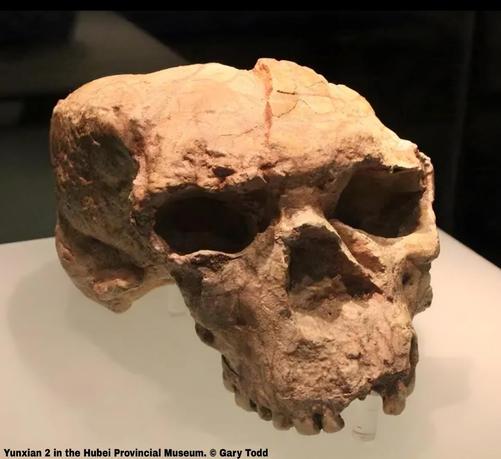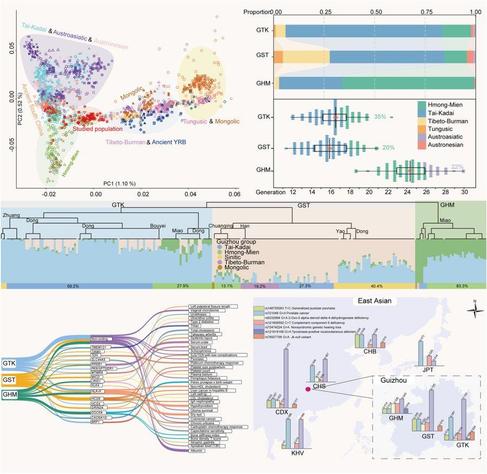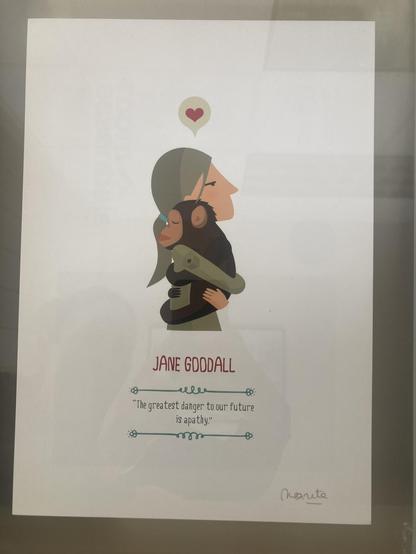New research shows that ancient hominids endured periodic lead exposure for two million years, shaping neural resilience, cognition, and possibly language evolution. #HumanEvolution #Neuroanthropology #Archaeology #Toxicology https://www.anthropology.net/p/toxic-intelligence-how-ancient-lead
#HumanEvolution
A 4.4-million-year-old ankle bone from Ardipithecus ramidus suggests early hominins still climbed like African apes — reshaping what we know about bipedal origins. #HumanEvolution #Paleoanthropology #FossilFinds #Science https://www.anthropology.net/p/the-ape-in-ardis-ankle-how-a-44-million
Massive stone “funnels” found in Slovenia and Italy may be Europe’s oldest hunting megastructures—proof that early societies shaped landscapes through cooperation and ingenuity. #Archaeology #Prehistory #HumanEvolution @pnas.org https://www.anthropology.net/p/walls-for-the-hunt-europes-forgotten
New research overturns the idea that Europe’s first modern humans copied their tools from the Near East—showing innovation sparked independently on both sides of the Mediterranean. #Archaeology #HumanEvolution #StoneTools #Paleolithic https://www.anthropology.net/p/the-myth-of-a-single-origin-how-two
Homo habilis under threat: AI study reveals leopards hunted our ancient ancestors
Almost 2 million years ago, early humans were not the hunters they are typically imagined to be — they were the hunted. A new study suggests that Homo habilis, one of the earliest members of our genus, was likely preyed upon by leopards in East Africa...
More information: https://archaeologymag.com/2025/10/study-reveals-leopards-hunted-our-ancestors/
Follow @archaeology
#archaeology #archeology #archaeologynews #anthropology #humanevolution #homohabilis
New research along Turkey’s Ayvalık coast reveals a lost Ice Age land bridge linking Anatolia and Europe—possibly used by both Neanderthals and early Homo sapiens. #Archaeology #HumanEvolution #Pleistocene #Aegean https://www.anthropology.net/p/when-the-sea-was-a-road-early-humans
Humans are the only species with chins. Here are the wildest theories at to why.
https://fed.brid.gy/r/https://www.upworthy.com/why-humans-have-chins-theory
🧬 Scientists have identified genetic traces of a “ghost” Neanderthal lineage in Europe.
No fossils. No bones. Just the haunting signature of a vanished people in our DNA.
#Archaeology #HumanEvolution #Brewminate
https://brewminate.com/unraveling-a-ghost-neanderthal-lineage-in-europe/
9,000 years of skeletons show that bone aging is more than biology—it’s culture in motion. Holocene humans aged with the same skeletal rhythm despite changing lifestyles. #Anthropology #Archaeology #HumanEvolution #BoneHealth https://www.anthropology.net/p/when-bones-remember-movement-9000
A 400,000-year-old elephant site near Rome reveals how early humans adapted to a warmer world, turning bones into tools and environment into teacher. #Archaeology #HumanEvolution #Pleistocene #Italy https://www.anthropology.net/p/when-giants-walked-the-tiber-how
New evidence from Patagonian hunter-gatherers shows that even in the harshest environments, care for the injured and disabled was a shared human commitment—not a luxury. #Archaeology #Paleopathology #HumanEvolution #Anthropology https://www.anthropology.net/p/the-wounded-and-the-cared-for-how
‘𝗧𝗼𝗼𝘁𝗵𝗽𝗶𝗰𝗸 𝗚𝗿𝗼𝗼𝘃𝗲𝘀’ 𝗶𝗻 𝗔𝗻𝗰𝗶𝗲𝗻𝘁 𝗛𝘂𝗺𝗮𝗻 𝗧𝗲𝗲𝘁𝗵 𝗠𝗮𝘆 𝗡𝗼𝘁 𝗯𝗲 𝗙𝗿𝗼𝗺 𝗧𝗼𝗼𝘁𝗵𝗽𝗶𝗰𝗸𝘀 𝗔𝗳𝘁𝗲𝗿 𝗔𝗹𝗹
New research challenges decades of assumptions about mysterious grooves in fossil teeth, finding they may not be evidence of prehistoric toothpick use after all, while revealing uniquely human dental problems.
#humanevolution #prehistoric #AncientOrigins
https://www.ancient-origins.net/news-evolution-human-origins/toothpick-grooves-reassessed-00102191
1 million-year-old Yunxian skull redefines human evolution and Denisovan origin
A crushed and distorted skull discovered in central China nearly 35 years ago is now redefining our understanding of early human evolution in Asia...
More information: https://archaeologymag.com/2025/09/yunxian-skull-redefines-human-evolution/
Follow @archaeology
#archaeology #archeology #archaeologynews #evolution #yunxianskull #Denisovans #homolongi #humanevolution
Lin et al. reveal #linguistic-linked demographic #history and insights into #human adaptation and #disease of multi-ancestry populations from the Yunnan–Guizhou Plateau, offering a framework for equitable #genomic research in underrepresented populations. doi.org/10.1111/jse.70009
Wiley Ecology & Evolution
#evolution #genomics #HumanEvolution #health #JSE
Ancient human and Denisovan interbreeding gave Indigenous Americans an advantage #Science #Biology #Genetics #IndigenousPeoples #HumanEvolution
https://purescience.news/article?id=950818
There are heros and then there are people who go beyond hero. Jane Goodall was the latter. What an immense gift she gave the world in her science and activism and what an immense void her passing will leave. #primate #humanevolution #academicchatter #goodall #heartbreak
"the greatest danger to our future is apathy"
Neanderthals thrived in the Ice Age not just through stocky bodies, but with fire, clothing, and high-calorie diets. New research shows cold survival was cultural, anatomical, and physiological. #Neanderthals #HumanEvolution #Anthropology https://www.anthropology.net/p/how-neanderthals-met-the-ice-age
13,000 years ago, Ice Age foragers in Germany used vivid blue azurite—the earliest known in Europe. Not for cave walls, but likely for skin or fabric. A lost palette of the past resurfaces. #Archaeology #Palaeolithic #HumanEvolution @antiquity.ac.uk https://www.anthropology.net/p/when-the-ice-age-turned-blue-the
12,000 years ago, desert dwellers in Arabia carved monumental camels into cliffs—signs of water, memory, and survival. Rock art was more than imagery; it was a lifeline. #Archaeology #Anthropology #HumanEvolution https://www.anthropology.net/p/how-monumental-art-helped-humans
New fossil research shows humans reshaped mammal communities more than the Ice Age. Farming and livestock spread scrambled natural ecosystems, linking continents with the same domesticated animals. #Archaeology #Anthropology #HumanEvolution #Ecology https://www.anthropology.net/p/how-humans-rewired-the-animal-world
